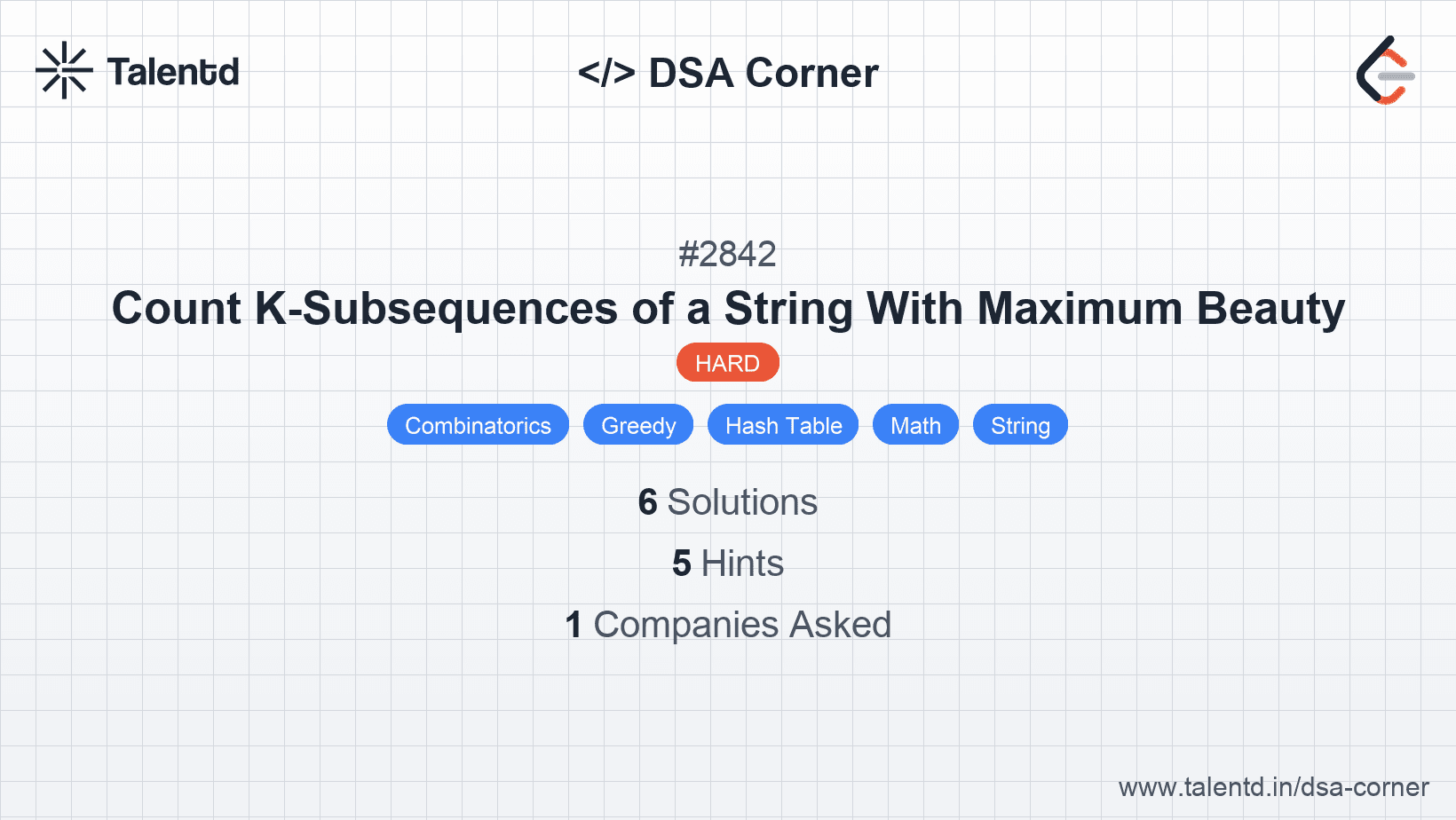
Sponsored
Sponsored
Use these hints if you're stuck. Try solving on your own first.
Since every character appears once in a k-subsequence, we can solve the following problem first: Find the total number of ways to select <code>k</code> characters such that the sum of their frequencies is maximum.
An obvious case to eliminate is if <code>k</code> is greater than the number of distinct characters in <code>s</code>, then the answer is <code>0</code>.
We are now interested in the top frequencies among the characters. Using a map data structure, let <code>cnt[x]</code> denote the number of characters that have a frequency of <code>x</code>.
Starting from the maximum value <code>x</code> in <code>cnt</code>. Let <code>i = min(k, cnt[x])</code> we add to our result <code> <sup>cnt[x]</sup>C<sub>i</sub> * x<sup>i</sup></code> representing the number of ways to select <code>i</code> characters from all characters with frequency <code>x</code>, multiplied by the number of ways to choose each individual character. Subtract <code>i</code> from <code>k</code> and continue downwards to the next maximum value.
Powers, combinations, and additions should be done modulo <code>10<sup>9</sup> + 7</code>.